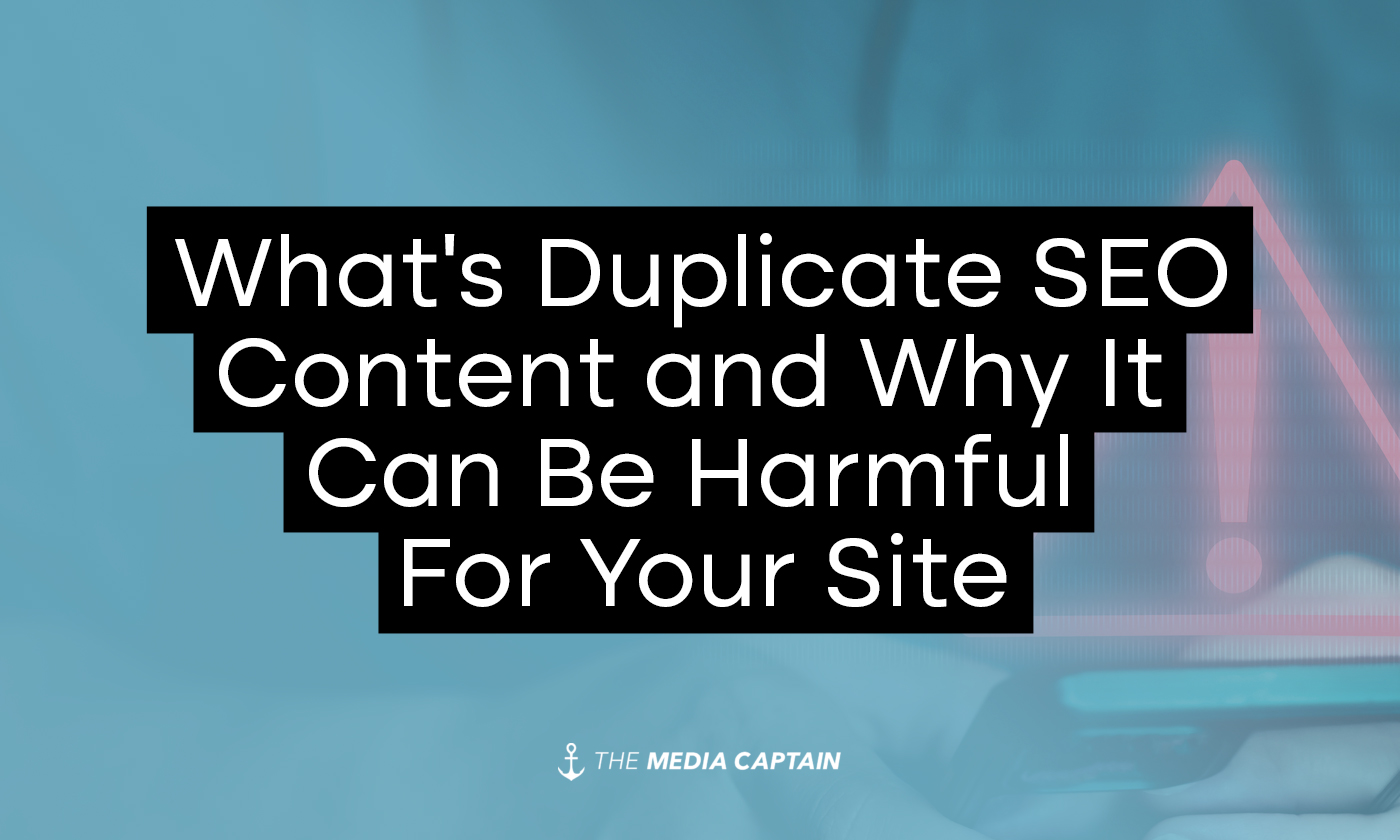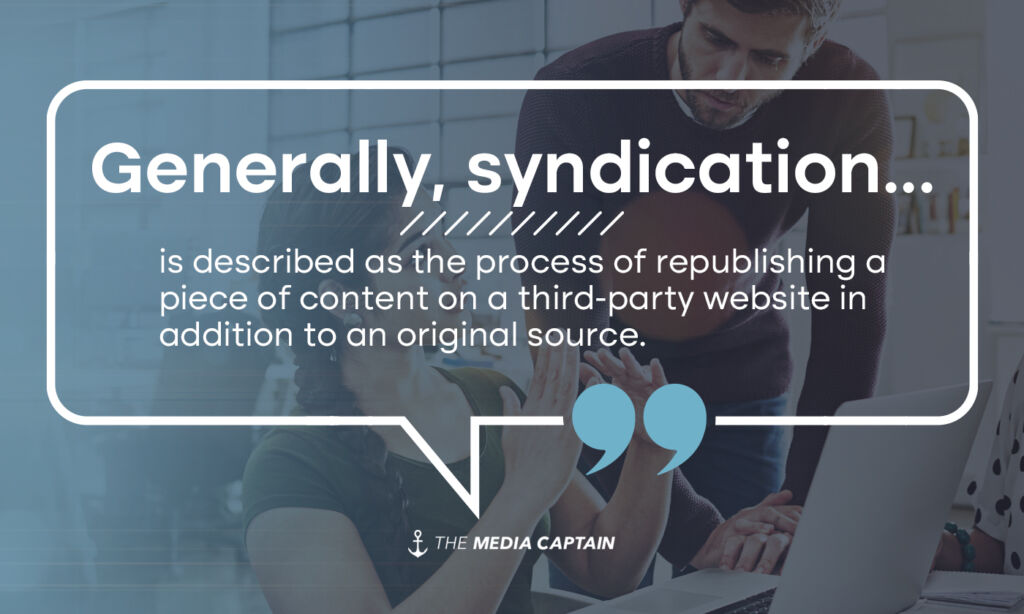Google and other search engines are intelligent and can tell when content on your site is not original. They’re also really good at picking up when multiple pages on the same website or across different websites are all carrying the same content. This is called duplicate content, and it is a common SEO problem.
Google Search Console describes Duplicate content as “substantive blocks of content within or across domains that either completely match other content or are appreciably similar.” Google’s definition of duplicate content is phrased intentionally inclusive even if it isn’t the whole page or if you only make slight tweaks or changes in an attempt to avoid an exact match.
When the same content appears on multiple pages, it can confuse search engines and users. Google doesn’t want to show multiple pages of the same content in their search results, so the search engine will pick a priority page and filter the other pages with duplicate content. Unfortunately, only one of the duplicate pages will typically appear for users. Therefore, it’s essential to avoid or minimize similar content if you want to rank high in the search engine results.
Get in Touch: Need help with SEO? Get in touch with our SEO Company!
Why Does Duplicate Content Matter?
The presence of duplicate content within a website or across multiple other sites on the internet can be problematic for SEO and ranking potential. If you are not producing unique content, Google has no reason to show your pages in its search results. In general, you should not plan to rank high in Google with content found on other, more trusted websites. Creating duplicate content is a waste of time, or in the malicious worst-case scenario, could put you at risk of a Google penalty.
Negative ramifications of duplicate content
Duplicate content is widespread, and in most situations, it is not going to result in a penalty for your website unless the identical content issues are caused by maliciously copied content. So instead of penalizing duplicate content, Google filters duplicate content in the SERPs by demoting similar content and rewarding other pages that provide unique content that adds value.
Even if Google doesn’t penalize you for duplicate content, users won’t be happy with their website experience. The moment they see the same thing twice, they may move on to discover something different on a competitor’s website.
Importance of creating strong, unique content
When it comes to content marketing, one of the most critical things you can do is create unique content. After all, how can you create value for your audience when your message is essentially the same as your competitors?
 Google has several quality signals that assess your content’s uniqueness and value for users. One of the growing factors that impacts rankings is E-A-T (Expertise, Authority, and Trust). Having an original, high-quality piece of content will help attract new visitors, keep your readers coming back, help Google recognize your site as an authority, and help you build relationships with other websites in your niche.
Google has several quality signals that assess your content’s uniqueness and value for users. One of the growing factors that impacts rankings is E-A-T (Expertise, Authority, and Trust). Having an original, high-quality piece of content will help attract new visitors, keep your readers coming back, help Google recognize your site as an authority, and help you build relationships with other websites in your niche.
Examples of Common Duplicate Content
Whether you’re working on a website with thousands of existing pages or a brand new website, it is crucial to minimize the amount of duplicate content found on your website.
Copied Content
For starters, Google ensures that people who steal content from other websites are not rewarded with high rankings. Just think about it; you took time to create an excellent piece of content, your audience starts to read it as you share it on social and email. Then the next day, you see the same article on another website, word for word, posted by someone else, and they got all the rankings and organic traffic. Copied content is the worst type of duplicated content, and in cases of malicious duplication, plagiarism, or copying of text, it is possible to get a manual penalty.
However, copied content doesn’t only occur by stealing from other websites. For example, when creating multiple pages on a similar topic, such as location- or city-specific pages, you may be creating copied content without adding unique value on each page. Some websites will try to spin content for these location pages, but that doesn’t add any real value for users.
Definition: content spinning is the process of rewriting a piece of text with the intent of making a similar version that avoids direct duplication detection.
The following quote from the 2017 Google Search Quality Evaluator Guidelines looks at spun content that is only slightly tweaked, “content which is copied, but changed slightly from the original. This type of copying makes it difficult to find the exact matching original source. Sometimes just a few words are changed, or whole sentences are changed, or a “find and replace” modification is made, where one word is replaced with another throughout the text. These types of changes are deliberately done to make it difficult to find the original source of the content. We call this kind of content “copied with minimal alteration.”
Google considers original, unique content to be a priority, and websites that try to get around this by copying or spinning content could get penalized.
Our philosophy at The Media Captain is to focus on ranking in your backyard, where your business is located, before thinking about building multiple city-level pages. Too often, we see companies wanting to rank in many markets before even ranking well in their own backyard. If you are going to take the route of creating multiple city-level pages, make sure to make the content unique by including reviews from people in that market, information about your office/location, etc.
Thin content causing duplicate content issues
Over the last decade, Google’s algorithm updates have demoted thin content and provided greater emphasis in the SERPs for high-quality content. Thin content is just as it sounds, content without depth or substance that provides very little value to the reader. Thin pages can occur naturally on a website if pages express short amounts of information or are navigational, such as contact form pages or processing order pages.
Below are two ways to resolve duplicate issues caused by thin content:
- Add more text and value to each of the thin pages to make them unique
- If the page provides no value for a user clicking from a search engine, you could no-index the page
Boilerplate text
Boilerplate text describes pieces of content that are used repeatedly throughout a website without providing unique value. This type of duplicate content is often found in the global navigation, website footer, author bios, company about sections of press releases, and core website themes/code. Because it is natural to have the same links and text in these places, Google doesn’t penalize this type of duplicate content. Instead, search engines largely ignore the boilerplate text and only consider the rest of the content.
If you are trying to improve or extend the word count by just tacking on the same paragraph at the end, it won’t work. Instead, your efforts would be better devoted to creating unique content that will add value for users visiting that page.
With more businesses distributing content online, there are many opportunities for duplication through syndication. Generally, syndication is described as the process of republishing a piece of content on a third-party website in addition to an original source.
Millions of websites allow for republishing posts, submitting press releases, sharing news stories, and using product descriptions from the original manufacturer. Unfortunately, while this technique can help share a company’s message, it can create conflicts as you try to gain traction on the search engine result pages (SERPs).
When considering publishing a piece of content on multiple websites, it is essential to remember that only one version will likely show up in the search results, and Google may not choose your website. To encourage Google to show your website, you can ask any syndicated websites to use a canonical tag to tell Google the URL of the original content source or mark their pages as no-index.
URL Variations
The last type of duplicate content can be caused by the technical and URL structure of your website. Specifically, the most common types of URL variations include:
HTTPS:// vs. HTTP:// duplication – If your website has a security certificate (SSL), but the pages are not correctly redirecting the HTTP:// URL to the HTTPS:// URL it will cause Google to see these as two separate pages with the same content. Fix this issue with a 301 redirect to the correct page.
www vs. non-www duplication – the same page duplication issue can occur if your website differentiates pages with or without the www. Fix this issue with a 301 redirect to the correct page and use a uniform format throughout every page of the website.
URL variations caused by parameters – It is essential to express the proper parameter structure (for filtering and site search) to Google, within Google Search Console (GSC), to represent the appropriate parameter behavior. Use the rel-canonical tag and GSC’s parameter feature to ensure that Google identifies the correct page for URLs with parameter variations.
SEO Tools to use to detect duplicate content
 The best way to identify and fix identical content issues is to use an SEO tool. Detecting duplicate content through SEO tools is an effective way to ensure you are not making the most of your existing content. There are many free and paid tools available online; below is a list of the most popular options:
The best way to identify and fix identical content issues is to use an SEO tool. Detecting duplicate content through SEO tools is an effective way to ensure you are not making the most of your existing content. There are many free and paid tools available online; below is a list of the most popular options:
- http://www.siteliner.com/
- https://www.duplichecker.com/
- http://www.plagiarismchecker.com/
- https://Grammarly.com
- https://Copyscape.com
Duplicate content on a website can be problematic for SEO, but thankfully it’s usually easy to fix. Once you’ve identified the duplicate content, you’ll need to decide what to do with it. Many of these helpful content checkers and SEO tools can also help you find pages that should be updated, where to add new text, or if you should remove or split your content into distinct pages.
How To Avoid Duplicate Content When Creating New Pages
Duplicate content is one of the most significant issues content marketers face, so how do you avoid it when creating new pages?
- Every new page should start with original content that is written from scratch specifically for that webpage.
- Don’t add text to your webpage that is found on other pages without providing value or additional context.
- Remember that spinning content by simply changing a few words, sentences, or rearranging content is not enough to make it unique.
- Avoid creating thin pages by making sure that each page has enough content.
- Make sure that each page with parameters uses the rel=” canonical” tag to refer to the primary URL and minimize the risk of duplicated content.
- Review how Google understands your website by using the tools found in Google Search Console.
- Plan your website with user experience, search intent, and conversion flow in mind so that you can help users get to the next step of their journey while also turning your website into an effective sales tool.
- Minimize boilerplate text that is used repeatedly across your website.
- Before publishing, use an SEO duplicate content tool to check if your new content is found elsewhere on the internet.
- Start by creating pages that rank well in your own backyard before focusing on other markets and location pages. When you are ready to expand your location page coverage, check that each page is unique and provides relevant information for that area’s visitors with reviews, office information, etc.
In Summary
In today’s crowded internet landscape, you can’t just create thin or duplicate content and expect it to rank at the top of Google’s SERPs. You need to create high-quality, engaging, and unique content that readers want to read and share. While it can be tempting to replicate competitors that may be ranking well, you have to weigh the risk vs. reward. Instead, start by identifying the searcher’s intent for a topic, and then use that as the backbone for the webpage and create content around the information that may be helpful to the searcher.
For more help or a personalized SEO consultation, reach out to the SEO team at The Media Captain.





